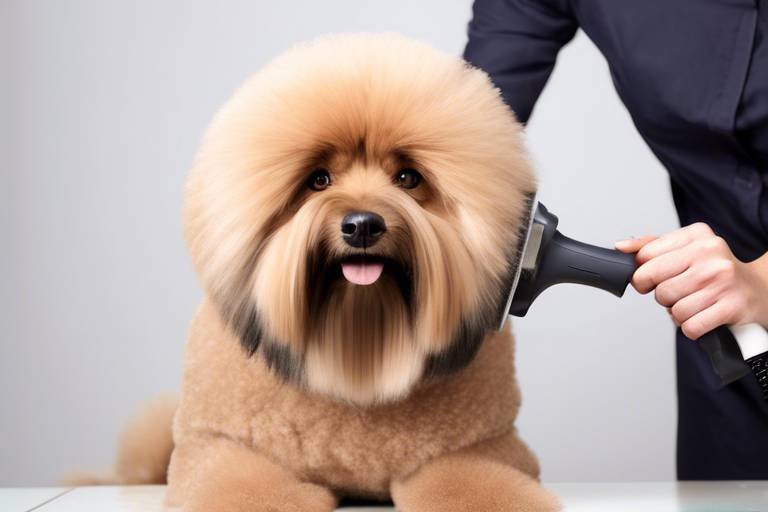Tips for Bathing and Grooming Cats Without Stress
Bathing and grooming your cat can often feel like a daunting task, filled with potential scratches, hisses, and a whole lot of fur flying around. But fear not! With the right approach, you can transform this seemingly chaotic process into a smooth and enjoyable experience for both you and your furry friend. Imagine turning bath time from a dreaded chore into a delightful bonding session! This article provides practical strategies to make the bathing and grooming process easier and more enjoyable, ensuring a stress-free experience for both pet and owner.
Every cat has its own unique personality, and understanding your cat's behavior is crucial in tailoring your grooming and bathing approach. Cats communicate through body language, and recognizing signs of stress or comfort can make all the difference. For instance, if your cat's ears are pinned back or their tail is puffed up, it’s a clear signal that they’re feeling anxious. On the other hand, a relaxed posture with a slow blink indicates that they’re comfortable. By observing these cues, you can adjust your grooming techniques accordingly, making the process smoother and more enjoyable for your feline friend.
When it comes to bathing and grooming, using the right products is essential. Not all shampoos and grooming tools are created equal, especially when it comes to our sensitive feline companions. Always opt for products specifically designed for cats, as their skin has a different pH balance than humans. Look for gentle, hypoallergenic shampoos that will cleanse without stripping away natural oils. Additionally, investing in quality grooming tools, such as slicker brushes and combs, can make a significant difference in maintaining your cat's coat and minimizing discomfort during grooming sessions.
Preparation is key! Before diving into bath time, it's essential to gradually acclimate your cat to water and the bathing environment. Start by introducing your cat to the sound of running water and let them explore the bathing area at their own pace. You might even consider placing their favorite toys nearby to create a positive association. This gradual exposure can significantly reduce anxiety and resistance, making the transition to bath time much smoother. Remember, patience is your best friend here!
Creating a calm and inviting bathing area can work wonders in easing your cat’s nerves. Consider factors like temperature and lighting; a warm, well-lit space can make your cat feel more secure. Ensure the area is safe by removing any slippery mats or obstacles that could cause injury. You might also want to have all your supplies within arm's reach, so you don’t have to leave your cat unattended. A stress-free environment is crucial for a positive bathing experience!
When it comes to bathing techniques, gentleness is key! Use lukewarm water and avoid direct streams, as cats can be sensitive to sudden splashes. A handheld sprayer or a cup can be a great alternative to keep the water flow controlled. Start by wetting your cat’s body gradually, avoiding the head, and applying the shampoo in a gentle massaging motion. This not only cleans but can also be soothing for your cat. Remember, the goal is to keep your kitty calm and collected throughout the process!
After the bath, drying your cat should be approached with care. Using a soft towel to gently pat your cat dry is a good start. If your cat is comfortable with it, a low-heat blow dryer can also be used, but be sure to keep it at a distance to avoid overheating. The key is to keep the experience as stress-free as possible while ensuring your cat is thoroughly dried. A cozy, warm environment post-bath can also help your cat feel secure and relaxed.
Establishing a regular grooming routine is essential for maintaining your cat’s coat and skin health. Not only does it prevent matting and excessive shedding, but it also strengthens the bond between you and your pet. Use effective brushing techniques that cater to your cat's coat type. For instance, long-haired cats may require daily brushing, while short-haired varieties might only need it once a week. Incorporating grooming into your cat’s routine can make it a familiar and enjoyable activity rather than a dreaded chore.
It’s not uncommon for cats to resist bathing or grooming due to fear. Understanding their triggers can help you employ desensitization techniques effectively. Start by introducing grooming tools gradually while offering treats and praise to create a positive association. If your cat shows signs of distress, take a step back and give them space. Patience and understanding are crucial in helping your cat feel secure and cooperative during these processes.
After a successful grooming or bathing session, it’s important to provide positive reinforcement. Treats, affection, and gentle playtime can help create a positive association with the experience. This not only encourages good behavior but also strengthens your bond with your cat. Remember, the goal is to make future grooming sessions easier and more enjoyable, turning what was once a stressful experience into a cherished routine.
- How often should I bathe my cat? Most cats do not require frequent baths, typically once every few months is sufficient unless they get into something messy.
- What if my cat hates water? Gradual exposure and positive reinforcement are key. Start with dry grooming and slowly introduce water in a stress-free manner.
- Can I use human shampoo on my cat? No, human shampoos can be too harsh for a cat's skin. Always use products specifically formulated for cats.
- How can I reduce shedding? Regular grooming and a healthy diet can significantly help in minimizing shedding.
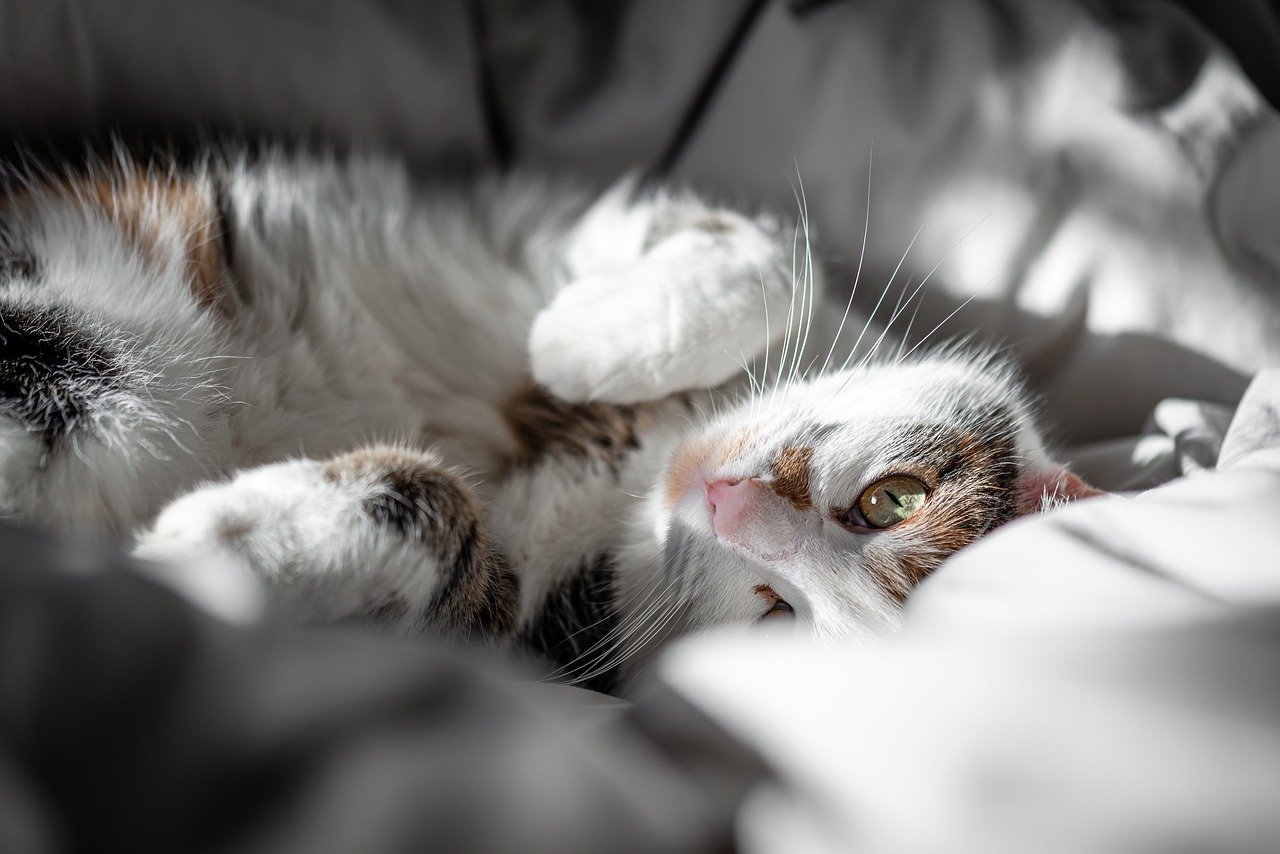
Understanding Your Cat's Behavior
When it comes to grooming and bathing your cat, understanding their behavior is crucial. Cats are creatures of habit and can be quite sensitive to changes in their environment. Recognizing your cat's body language can help you tailor your approach, making the grooming process smoother and more comfortable for your feline friend. For instance, if your cat's ears are pinned back or their tail is puffed up, these are clear signs of stress or discomfort. On the other hand, a relaxed cat may have their ears forward and their tail held high, indicating they are more receptive to being handled.
Moreover, cats communicate through a variety of vocalizations and body signals. A soft purr might suggest contentment, while hissing or growling can indicate fear or annoyance. It's essential to pay attention to these cues, as they can guide you in adjusting your techniques. For example, if your cat seems anxious, you might want to take a step back and allow them to explore the bathing area at their own pace. This gradual introduction can help them feel more secure and reduce their anxiety.
Another important aspect to consider is the timing of your grooming sessions. Cats are often most relaxed after a good play session or a meal. Scheduling grooming right after these activities can make your cat more amenable to the process. Additionally, using treats as positive reinforcement can create a more positive association with grooming. Just imagine how much easier it would be if your cat looked forward to bath time instead of dreading it!
To better understand your cat's behavior, consider the following common signs:
- Purring: Indicates contentment but can also occur when a cat is anxious.
- Hiding: A sign that your cat is feeling stressed or threatened.
- Tail Position: A high, upright tail shows confidence, while a low tail can indicate fear.
- Vocalizations: Pay attention to the tone and frequency; a high-pitched meow can signal distress.
Understanding these behaviors will not only help you create a stress-free grooming environment but also strengthen the bond between you and your furry companion. Remember, patience is key. Each cat is unique, and what works for one may not work for another. Take the time to observe and learn about your cat's specific preferences and dislikes. With a little effort, you can transform grooming and bathing from a dreaded chore into a bonding experience filled with trust and affection.

Choosing the Right Products
When it comes to bathing and grooming your cat, choosing the right products is absolutely essential. Not only do you want to ensure that your feline friend is safe and comfortable, but you also want to make the entire process as smooth as possible. Think of it like picking the perfect outfit for a special occasion; the right choices can make all the difference!
First and foremost, you should look for shampoos and conditioners that are specifically formulated for cats. Human products can contain harsh chemicals that may irritate your cat's sensitive skin. Always check the label for natural ingredients and avoid anything with strong fragrances or sulfates. Products with ingredients like oatmeal or aloe vera can be soothing and moisturizing, making bath time a more pleasant experience for your furry friend.
Next, consider the grooming tools you'll need. A good brush is crucial for maintaining your cat's coat and reducing shedding. Depending on your cat's fur type, you might need a slicker brush, a comb, or even a de-shedding tool. For instance, long-haired cats often benefit from a wide-toothed comb to prevent matting, while short-haired breeds may just need a simple brush to keep their coat in tip-top shape. It's all about finding what works best for your individual cat!
Here's a quick breakdown of some essential grooming products:
| Product Type | Purpose | Recommended Features |
|---|---|---|
| Shampoo | Cleaning and deodorizing | Natural ingredients, hypoallergenic |
| Conditioner | Moisturizing and detangling | Oatmeal or aloe vera based |
| Brush | Removing loose fur | Type based on fur length |
| Comb | Detangling | Wide-toothed for long hair |
Additionally, don't forget about nail clippers and ear cleaning solutions. Keeping your cat's nails trimmed is vital for their safety and your furniture's longevity! Choose a clipper designed for pets, which will make the process easier and less stressful for both of you. For ear cleaning, look for gentle solutions that are specifically made for cats, as their ears can be quite sensitive.
Lastly, always remember to introduce new products gradually. Just like humans, cats can be a bit finicky about changes in their routine. Start by letting them sniff the products before you use them, and try to associate the process with positive experiences, like treats or playtime. This way, your cat will be more likely to accept these products as part of their grooming routine!
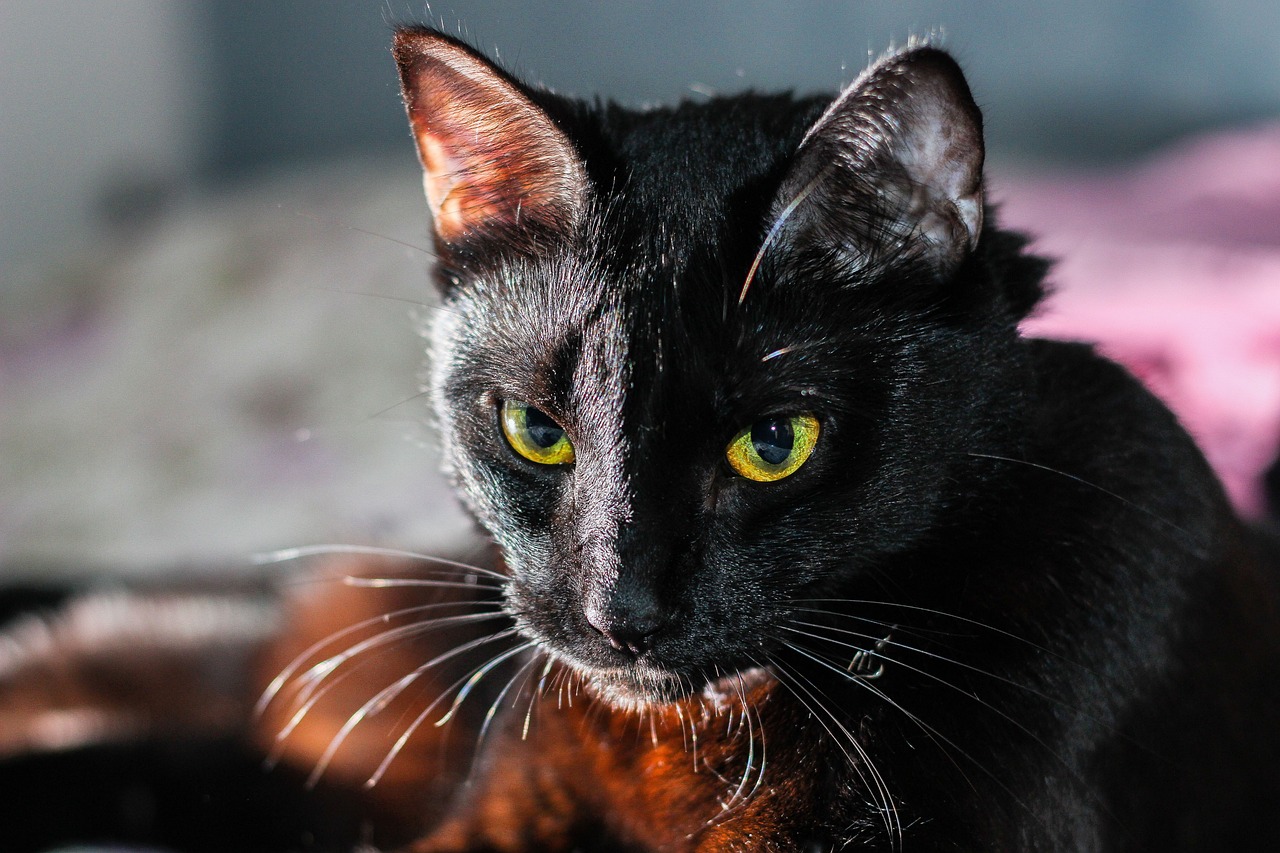
Preparing Your Cat for Bathing
Preparing your cat for bathing is a crucial step in ensuring that both you and your feline friend have a pleasant experience. Just like humans, cats can be apprehensive about water, so it's essential to ease them into the process. Start by introducing your cat to the bathing environment well in advance. Allow them to explore the bathroom or bathing area at their own pace. You might want to place their favorite toys or treats nearby to create a positive association with the space.
Another effective strategy is to get your cat accustomed to the sound of running water. You can do this by turning on the faucet briefly while they are in the room, allowing them to hear the sound without the pressure of being bathed. Gradually increase their exposure by letting them watch you fill the tub or sink with water, ensuring the water is lukewarm, as cats are sensitive to temperature changes.
Consider also desensitizing your cat to being handled. Spend time gently petting and brushing them in the days leading up to bath time. This not only helps them relax but also makes them more comfortable with being touched in areas that will be wet during the bath. If your cat is particularly skittish, you might want to practice handling them in a way that mimics the bathing process. For instance, gently wetting a washcloth and rubbing it on their back can help them get used to the sensation of water.
Before the big day, make sure you have all the necessary supplies ready. This includes cat-specific shampoo, a non-slip mat for the tub, towels, and a brush. Having everything prepared will help you feel more confident and organized, which in turn will help your cat feel more secure. Remember, the goal is to create a calm and reassuring atmosphere that minimizes stress for both of you.
Lastly, consider the timing of your bathing session. Choose a day when your cat is typically calm and relaxed. Avoid times when they are more energetic or playful, as this could lead to increased resistance. By following these preparation steps, you’re setting the stage for a more enjoyable bathing experience that can strengthen the bond between you and your furry companion.
- How often should I bathe my cat? Generally, cats groom themselves, so bathing is not often necessary. A bath every few months or when they get particularly dirty is usually sufficient.
- What if my cat hates water? If your cat is particularly averse to water, consider using a damp cloth to clean them instead, or consult a professional groomer.
- Can I use human shampoo on my cat? No, always use products specifically formulated for cats, as human shampoos can irritate their skin.
- What should I do if my cat becomes aggressive during bathing? If your cat shows signs of aggression, it’s best to stop and try again later. Never force your cat into a bath, as this can increase their fear and resistance.

Setting Up a Comfortable Bathing Space
Creating a comfortable bathing space for your cat is crucial to ensure a positive experience for both you and your furry friend. Think of this area as a sanctuary, where your cat can feel safe and relaxed. First, consider the temperature of the room. Cats are sensitive creatures, and a chilly environment can make them anxious. Aim for a warm room, ideally between 75°F and 80°F (24°C to 27°C). This will help keep your cat comfortable and less likely to resist the bath.
Next, focus on the lighting. Soft, natural light is ideal, as harsh fluorescent lights can be unsettling. If possible, set up the bathing area near a window where your cat can see outside. This distraction can make the experience less intimidating. You might also want to use a non-slip mat in the bathtub or sink to give your cat a sense of security. Cats dislike slipping, and a stable footing can ease their nerves.
Safety is another critical factor. Ensure that all bathing supplies, such as shampoos and conditioners, are within reach but out of your cat's sight. This way, your cat won't see them and become anxious about what's coming. A calm environment is vital, so play soft music or keep the noise level down to minimize stress. You could even have some of your cat's favorite toys nearby to help them feel more at home.
Additionally, consider using a shallow tub or sink instead of a deep bathtub. Cats generally prefer shallow water, and it can help prevent panic. When filling the tub, use lukewarm water—too hot or cold can be a shock! You might want to fill the tub or sink just enough to wet your cat's fur without overwhelming them. Always have a towel ready to dry your cat afterward, as a quick, gentle drying can help them feel more secure.
In summary, setting up a comfortable bathing space involves:
- Maintaining an ideal temperature (75°F to 80°F).
- Using soft lighting to create a soothing atmosphere.
- Ensuring safety with non-slip mats.
- Using shallow containers for bathing.
- Keeping favorite toys nearby to ease anxiety.
By taking these steps, you can transform bath time from a dreaded chore into a more pleasant experience for your cat. Remember, patience is key. The more comfortable your cat feels in this space, the easier future grooming and bathing sessions will be!
Q: How often should I bathe my cat?
A: Most cats groom themselves effectively and don’t require frequent baths. A bath every few months is typically sufficient, but if your cat gets into something messy or has specific skin issues, you may need to bathe them more often.
Q: What if my cat hates water?
A: If your cat dislikes water, consider using dry shampoo or a damp cloth to clean them instead. Gradually introducing them to water can also help ease their fears over time.
Q: Can I use human shampoo on my cat?
A: No, human shampoo can be harmful to cats. Always use products specifically formulated for felines to ensure their safety and comfort.
Q: What should I do if my cat becomes aggressive during bathing?
A: If your cat shows signs of aggression, it’s best to stop the process and try again later. Consider using calming sprays or pheromone diffusers to help reduce anxiety before future baths.

Bathing Techniques for Cats
Bathing your cat can feel like trying to wrestle a slippery fish out of a pond, but with the right techniques, it can be a breeze! First and foremost, always remember that patience is key. Cats are not naturally inclined to water, so it’s crucial to approach the bathing process with a calm demeanor. Start by using lukewarm water; hot water can be uncomfortable, while cold water is just plain uninviting. A good rule of thumb is to test the water temperature on your wrist, just like you would for a baby. If it feels right to you, it’s likely perfect for your feline friend.
Next, consider using a handheld showerhead or a cup to gently pour water over your cat. Avoid direct streams of water aimed at their face or ears, as this can lead to panic. Instead, start at the back and work your way forward, allowing them to adjust to the sensation. If your cat seems particularly anxious, you might want to use a damp sponge or washcloth to wipe them down instead. This method can help keep the experience less overwhelming.
As you lather your cat with shampoo, choose a product specifically designed for felines. Human shampoos can be harmful due to their different pH levels. Gently massage the shampoo into their coat, making sure to avoid the eyes, ears, and mouth. If your cat has long hair, consider using a detangling solution beforehand to ease the brushing process. Remember, this is not a race; take your time and speak soothingly to your cat to help them feel more at ease.
Once you’ve rinsed out the shampoo thoroughly, it’s time to dry your furry friend. This step is just as important as the bathing itself. Use a soft, absorbent towel and gently pat your cat dry. If your cat tolerates it, you can use a low-heat blow dryer from a distance to help remove excess moisture. Be sure to keep the dryer on the lowest setting to avoid overheating your pet. Throughout this process, offering treats or praise can help create a positive association with bath time, making it easier for future sessions.
In summary, bathing your cat doesn’t have to be a battle. By employing gentle techniques and taking the time to acclimate them to the water, you can transform bath time into a more pleasant experience for both you and your beloved pet. Remember, every cat is different, so be sure to adjust your methods according to their comfort level.
- How often should I bathe my cat? Most cats do a great job of grooming themselves, so bathing them once every few months is usually sufficient. However, if your cat gets into something messy or has a medical condition, more frequent baths may be necessary.
- What if my cat hates water? If your cat is particularly averse to water, consider using dry shampoos or grooming wipes as alternatives. Gradual exposure to water can also help reduce anxiety.
- Can I use human shampoo on my cat? No, human shampoos are not formulated for a cat's skin and can cause irritation. Always use products specifically designed for cats.
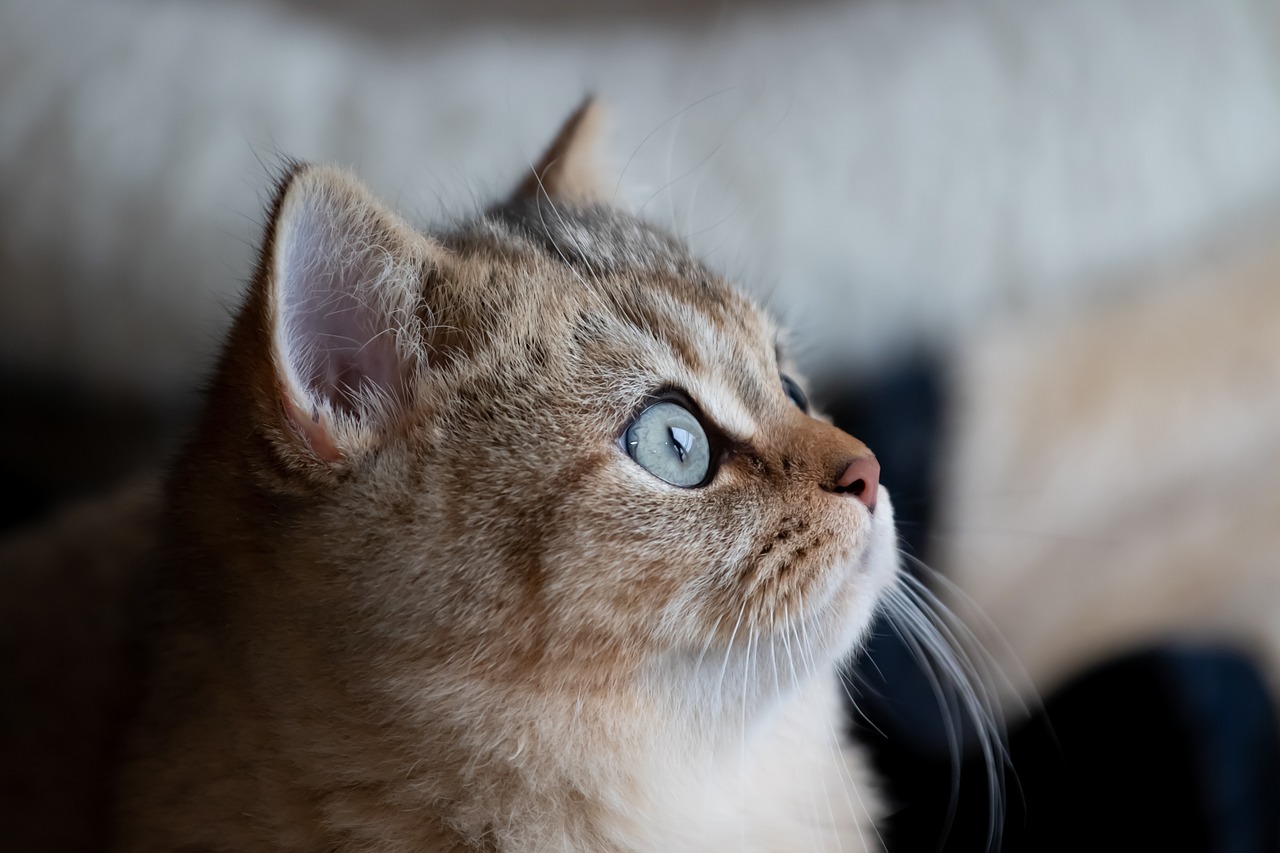
Drying Your Cat Safely
After a refreshing bath, the next crucial step is drying your cat safely and effectively. Many pet owners might think that a quick shake-off is enough, but cats often need a little more help to get rid of excess moisture. First and foremost, it’s essential to remain calm and gentle during this process, as your cat may still be feeling a bit anxious from the bath. The key is to create a comforting environment that makes your feline friend feel secure.
Start by using a soft, absorbent towel. Gently wrap your cat in the towel, allowing it to absorb the water without causing stress. Avoid vigorous rubbing, as this can be uncomfortable for your cat and may even lead to matting of their fur. Instead, pat them down, focusing on areas that tend to hold more water, such as the belly and paws. Remember, cats are not fans of being wet, so your gentle touch will go a long way in keeping them calm.
Once you've removed most of the moisture with the towel, you might wonder if using a blow dryer is a good idea. While some cats may tolerate it, many will find the noise and airflow frightening. If you choose to use a blow dryer, opt for a low-heat setting and keep it at a safe distance. Always monitor your cat's reactions—if they seem uncomfortable or stressed, it’s best to turn it off and stick to towel drying.
For those cats that are particularly resistant to blow dryers, consider using a cat-specific drying tool. These tools often have lower noise levels and are designed to be less intimidating. Alternatively, you can let your cat air dry in a warm, draft-free room. Just be sure to supervise them to prevent any mischief while they dry off!
In addition to drying techniques, it’s important to keep an eye on your cat’s health post-bath. If your cat has long fur, ensure that you check for any tangles or mats that may have formed during the bathing process. Regular brushing can help prevent these issues and keep your cat’s coat looking its best.
Finally, don’t forget to reward your cat after the drying process. Offering a few treats and some affection can help them associate bath time with positive experiences. This will make future grooming sessions much easier and more enjoyable for both of you!
- How often should I bathe my cat? It depends on their coat type and lifestyle. Generally, most cats only need a bath every few months.
- What if my cat hates water? Many cats dislike water. Gradual exposure and positive reinforcement can help ease their fear.
- Can I use human shampoo on my cat? No, always use cat-specific shampoos as they are formulated to be safe for their skin and coat.
- Is it safe to use a blow dryer on my cat? If your cat tolerates it, use a low-heat setting and keep it at a distance. Monitor their comfort closely.
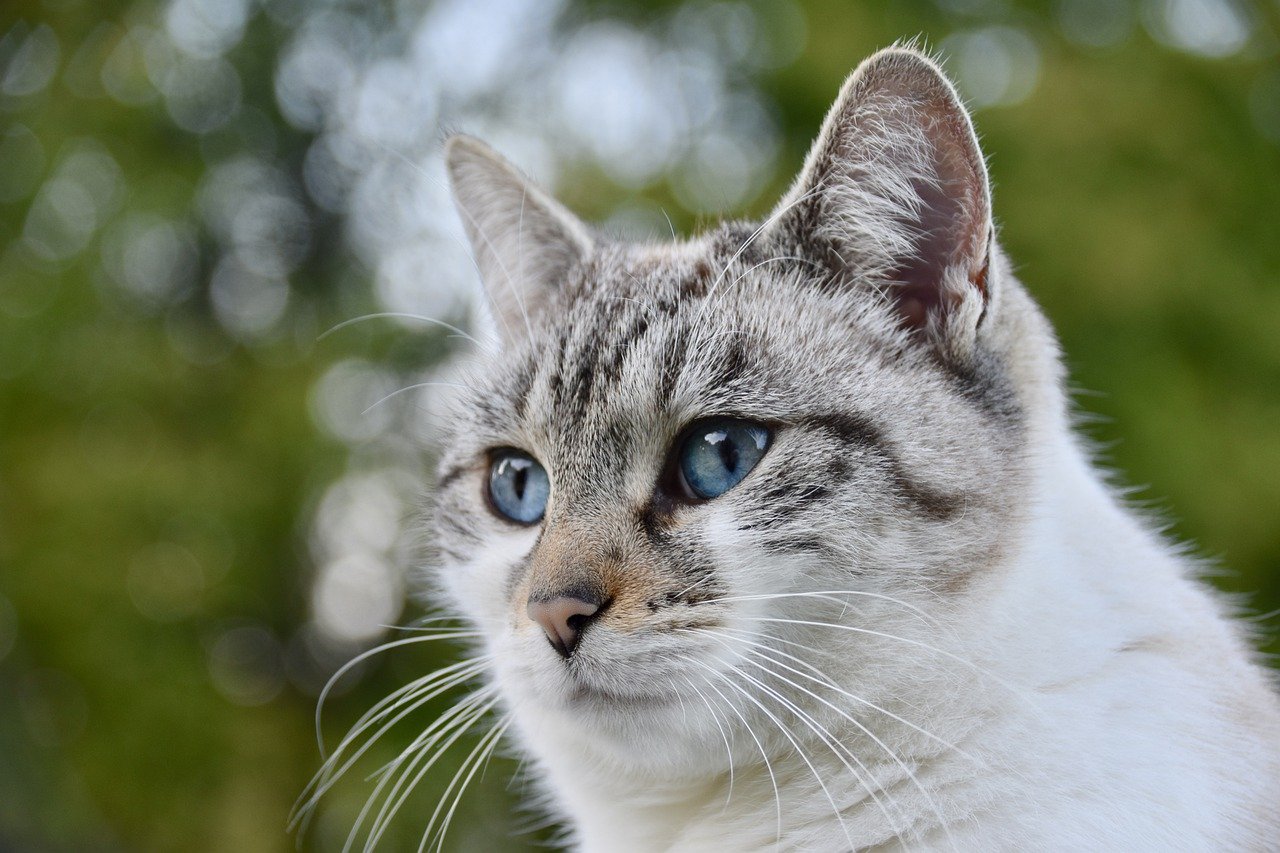
Regular Grooming Tips
Establishing a consistent grooming routine for your cat is not just about keeping them looking fabulous; it’s essential for their overall health and well-being. Regular grooming helps to reduce shedding, prevent matting, and keep their skin healthy. Think of it as a spa day for your feline friend! But how do you go about it without turning it into a wrestling match? Here are some practical tips to make grooming a breeze.
First and foremost, choose the right tools. The grooming tools you select can make a world of difference. A good quality brush suited to your cat's coat type is crucial. For instance, long-haired cats benefit from a wide-toothed comb and a slicker brush, while short-haired cats may only need a rubber grooming mitt to remove loose hair. Here’s a quick overview of grooming tools:
| Coat Type | Recommended Tools |
|---|---|
| Short Hair | Rubber Grooming Mitt, Bristle Brush |
| Medium Hair | Slicker Brush, Wide-Toothed Comb |
| Long Hair | Slicker Brush, Metal Comb, De-shedding Tool |
Once you have the right tools, set a grooming schedule. Regular sessions, ideally once a week, can help your cat get used to the process. If your cat has a thicker coat, you might want to increase this to two or three times a week. Remember, consistency is key! This routine not only helps keep their coat in tip-top shape but also strengthens the bond between you and your furry companion.
Next, create a calm environment for grooming. Find a quiet space where your cat feels safe and relaxed. You can even play soft music or use calming pheromone sprays to help soothe their nerves. If your cat seems anxious, consider grooming them in short sessions, gradually increasing the time as they become more comfortable. Always keep an eye on their body language; if they start to squirm or hiss, take a break and try again later.
When it comes to the actual grooming process, be gentle and patient. Start by brushing in the direction of hair growth, using slow and gentle strokes. If you encounter any tangles, don’t pull; instead, use your fingers to gently separate the hair or use a detangling spray designed for cats. And let’s not forget about those sensitive spots! Cats often dislike having their bellies brushed, so be mindful of their preferences.
Lastly, always end grooming sessions on a positive note. Give your cat a treat or some extra cuddles after grooming to help them associate the experience with something enjoyable. This will make future grooming sessions much easier. Over time, your cat will learn that grooming is a part of their routine, much like their meals or playtime.
In summary, regular grooming is not just a chore; it's an opportunity to bond with your cat while keeping them healthy and happy. By using the right tools, establishing a routine, creating a calm environment, and being gentle, you’ll transform grooming from a stressful task into a delightful experience for both you and your feline friend.
Q: How often should I groom my cat?
A: It depends on the coat type. Short-haired cats typically require grooming once a week, while long-haired cats may need grooming several times a week to prevent matting.
Q: What if my cat hates being groomed?
A: Start slowly and gently, using treats and praise to create a positive association. Gradually increase the duration of grooming sessions as your cat becomes more comfortable.
Q: Can I use human grooming products on my cat?
A: No, human grooming products can be harmful to cats. Always use products specifically designed for feline use.
Q: What should I do if I find mats in my cat's fur?
A: If the mats are small, you can carefully use a comb to detangle them. For larger mats, it’s best to consult a professional groomer to avoid hurting your cat.

Handling Resistance and Fear
When it comes to grooming and bathing your cat, it’s not uncommon for them to show signs of resistance and fear. After all, for many felines, these activities can feel like a complete invasion of their personal space. So, how can you turn this anxiety-ridden experience into a more manageable one? First, it’s essential to understand that your cat’s behavior is a form of communication. They may express their discomfort through hissing, scratching, or simply trying to escape. The key is to approach the situation with patience and empathy.
One effective strategy is to identify your cat's triggers. Is it the sound of running water? The sight of grooming tools? Or perhaps the very act of being held? By observing your cat closely, you can pinpoint what specifically causes their fear and address those issues directly. For example, if they panic at the sound of water, try introducing them to the bathing area without any water at first. Let them explore the space at their own pace. This gradual exposure helps build their confidence and reduces anxiety.
Another technique is to use desensitization. This involves slowly introducing your cat to the elements of bathing or grooming over time. Start by gently brushing them for a few minutes each day, gradually increasing the duration as they become more comfortable. You might also want to try placing their favorite toys or treats near the grooming area to create a positive association. This way, your cat will start to see grooming as a less threatening experience and may even look forward to it!
Remember, patience is key. If your cat shows signs of distress during grooming or bathing, take a step back and give them a break. Sometimes a short pause can make all the difference. You can also consider using calming aids, such as pheromone sprays or calming collars, which can help ease your cat's anxiety.
Here’s a quick summary of some techniques to handle resistance and fear:
- Identify Triggers: Observe what scares your cat and address those elements.
- Gradual Exposure: Introduce grooming and bathing slowly to build confidence.
- Positive Reinforcement: Use treats and affection to make the experience enjoyable.
- Take Breaks: Don’t hesitate to pause if your cat becomes too stressed.
- Calming Aids: Consider pheromone products to help soothe your cat.
By understanding your cat’s behavior and employing these strategies, you can transform grooming and bathing from a stressful ordeal into a pleasant bonding experience. Just like humans, cats thrive on comfort and security, so the more you can create a positive atmosphere, the easier these sessions will become.
Q: How can I tell if my cat is scared during grooming?
A: Signs include hissing, scratching, trying to escape, or hiding. Pay attention to their body language, such as flattened ears or a twitching tail.
Q: What should I do if my cat won’t stop struggling?
A: Stop the grooming session immediately. Give your cat some space, and try again later when they seem calmer.
Q: Can I use human grooming products on my cat?
A: No, always use products specifically designed for cats, as human products can be harmful to their skin and coat.
Q: How often should I groom my cat?
A: It depends on the breed, but generally, long-haired cats should be groomed several times a week, while short-haired cats may only need it once a week.
Q: Are there any calming products I can use?
A: Yes, there are various pheromone sprays, calming collars, and natural supplements available that can help soothe anxious cats.

Post-Grooming Care and Rewards
After a successful grooming or bathing session, it’s essential to focus on post-grooming care to ensure your cat feels comfortable and appreciated. Think of this as the cherry on top of a well-executed grooming routine. Just like humans, cats thrive on positive reinforcement. By rewarding them after grooming, you create a positive association with the experience, which can make future sessions much easier.
One effective way to reward your cat is through treats. Choose high-quality cat treats that your feline friend loves. Make sure to offer these treats immediately after grooming, so they connect the dots between the grooming and the reward. You might also want to consider using their favorite toys or engaging in a play session as a reward. This not only reinforces the positive experience but also helps to relieve any residual stress from the grooming.
Additionally, don’t underestimate the power of affection. Spend a few moments cuddling or gently petting your cat after grooming. This not only calms them down but also strengthens your bond. Cats are social creatures, and they appreciate the attention, especially after a potentially stressful experience. You can also use a soothing voice to reassure them, letting them know they did a great job.
Here are some tips for effective post-grooming care:
- Provide a cozy space: After grooming, allow your cat to retreat to a comfortable spot where they can relax and feel safe.
- Monitor their behavior: Keep an eye on your cat for a little while after grooming to ensure they’re not overly stressed.
- Hydration: Make sure fresh water is available for your cat, as grooming can sometimes lead to a bit of dehydration.
In conclusion, post-grooming care is crucial for your cat's emotional well-being. By providing treats, affection, and a safe space, you can turn grooming from a dreaded chore into a pleasant bonding experience. Remember, the goal is to make grooming a positive ritual that both you and your cat can look forward to!
Q: How often should I groom my cat?
A: The frequency of grooming depends on your cat's breed and coat type. Long-haired cats typically require more frequent grooming, while short-haired cats may only need it once a week.
Q: What if my cat hates water?
A: Many cats dislike water. Gradual exposure and positive reinforcement can help. Consider using a damp cloth for cleaning instead of a full bath if your cat is particularly resistant.
Q: Can I use human shampoo on my cat?
A: No, human shampoos can be harmful to cats. Always use products specifically formulated for felines to ensure their safety and comfort.
Q: What should I do if my cat becomes aggressive during grooming?
A: If your cat shows signs of aggression, stop immediately and give them space. Try again later, and consider using desensitization techniques to help them adjust.
Frequently Asked Questions
- How often should I bathe my cat?
Generally, cats are good at grooming themselves, so they don’t need frequent baths. Bathing your cat once every few months is usually sufficient, unless they get into something messy or have a skin condition. Always consult with your vet for specific recommendations based on your cat's needs.
- What products should I use for bathing my cat?
It's essential to use products specifically designed for cats, such as cat shampoos and conditioners. These products are formulated to be safe for their skin and coat. Avoid using human shampoos, as they can irritate your cat's skin.
- How can I make my cat comfortable during a bath?
To help your cat feel at ease, start by acclimating them to water gradually. You can use a shallow basin and let them explore it before introducing water. Make sure to create a calm environment with minimal noise and distractions to keep your cat relaxed.
- What if my cat hates water?
If your cat is particularly averse to water, consider using dry shampoo or pet wipes as alternatives. You can also try desensitization techniques, like gradually introducing them to water in small amounts during playtime.
- How can I effectively dry my cat after a bath?
After bathing, gently towel-dry your cat to remove excess water. If you use a blow dryer, keep it on a low heat setting and maintain a safe distance to prevent overheating. Most cats prefer air drying, so allow them to shake off excess water in a safe space.
- What should I do if my cat resists grooming?
If your cat shows resistance during grooming, take it slow. Start with short sessions and gradually increase the duration as they become more comfortable. Use treats and praise to create positive associations with grooming time.
- Is there a best time to groom my cat?
The best time to groom your cat is when they are calm and relaxed, such as after a meal or playtime. Avoid grooming when they are feeling anxious or hyperactive, as this can lead to a stressful experience for both of you.
- How can I reward my cat after grooming?
Positive reinforcement is key! After grooming or bathing, offer your cat their favorite treats, a gentle pet, or some playtime. This will help them associate grooming with positive experiences, making future sessions easier.






